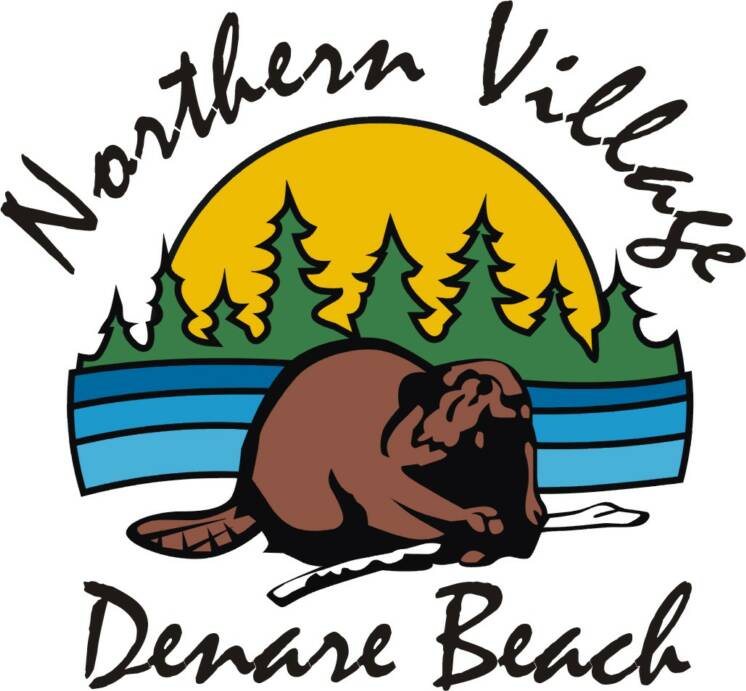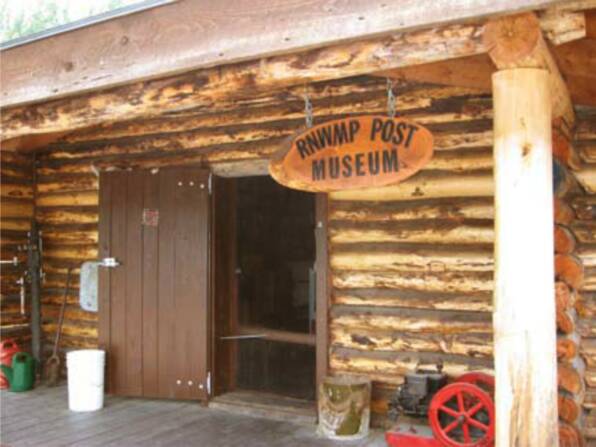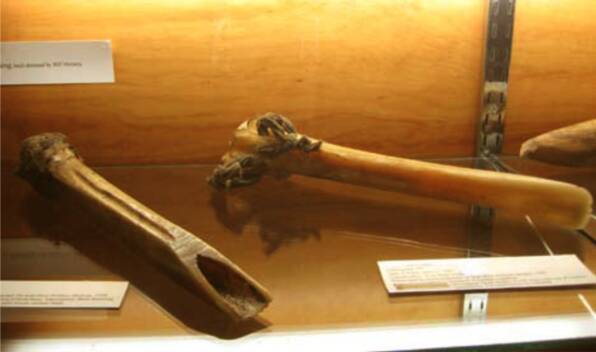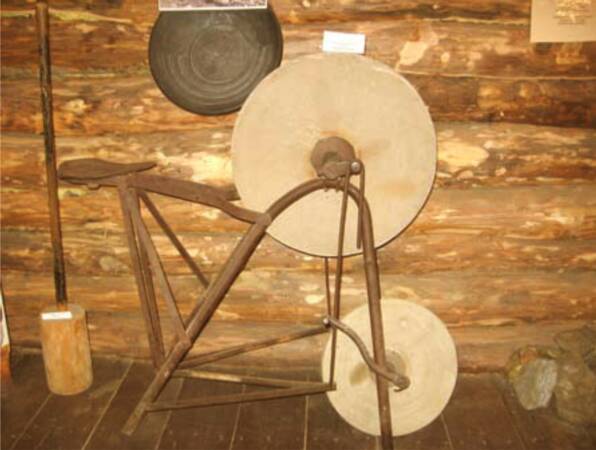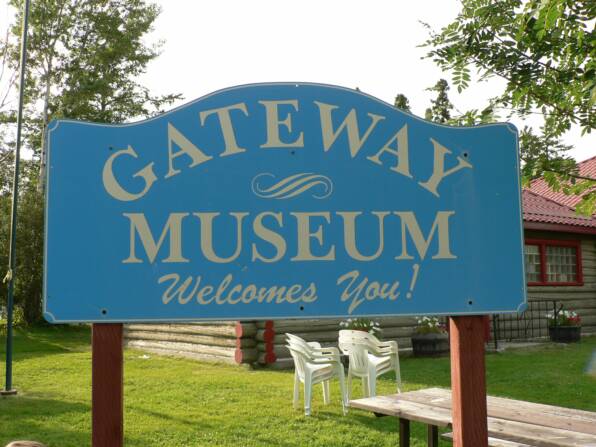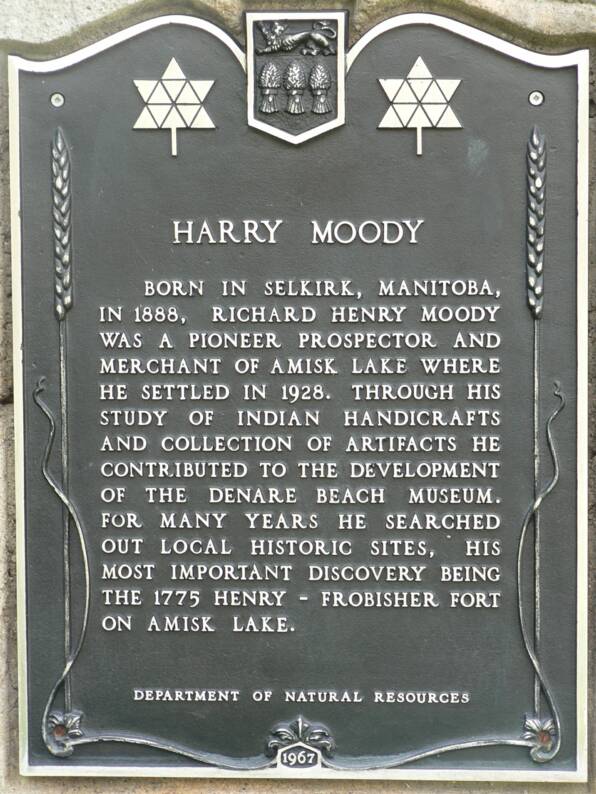A little bit about us:
The area originally settled around Amisk Lake was called "Beaver Lake". Amisk is Cree for Beaver and thus the origin of the name. In 1937, the subdivision of the present community of Denare Beach took place. The community quickly became a resort area following the construction of a roadway to the mining center of Flin Flon.
How did we get our name?
When Saskatchewan Parks became responsible for the area they changed the name from Amisk or Beaver to Denare Beach. Taking the first two letters from Department of Natural Resources they arrived at the name of Denare Beach.
The village has managed to retain its resort atmosphere, while growing with the development of new homes.
History on our Doorstep
– Morley G. Naylor –
(courtesy Cottage North, Volume 7 Issue 3)
Our southern neighbours in the United States, as we all know, have ‘boxed and sold’ their frontier history to the limit. Canadians are somewhat more reserved about our wild frontier days. The famous Canadian fur trade, exploration, opening of the west, the railroad, and gold rush activity form a large part of our heritage. Our history is every bit as fascinating as the Hollywood productions, as it’s all here right next door. While much has been written about the history of Flin Flon, Amisk Lake was making Canadian history 150 years before Flin Flon was even discovered. So join me for an historical tour of Amisk (Cree for Beaver) Lake - truly history on our doorstep.
The Fur Trade
The history of Amisk Lake dates back to the days of the fur trade in Canada. Up until the mid 1770s, the Hudson’s Bay Company (HBC) had taken the easy route by traditionally waiting on the coast for the furs to come to them. Their monopoly was being threatened by the Northwest Company (NWC), whose headquarters were in Montreal. The ‘Montrealers’ were quickly pushing into HBC territory and built many posts around Lake Winnipeg. Their group included Alexander Henry Sr., the Frobisher brothers, James McGill and Peter Pond.
The HBC, for over 100 years, had enjoyed unrestricted trade with native peoples carrying their furs down the Churchill River system to Hudson’s Bay, and was not about to give up its monopoly. In 1774, under the direction of Samuel Hearne, HBC established their first western and inland post at Cumberland House, Saskatchewan. The Hudson’s Bay Company had just begun to fight back the opposition.
The Sturgeon Weir River and Amisk Lake, located just upriver from the HBC post at Cumberland House, were strategic locations for NWC. Their goal was to subvert the flow of furs away from HBC at Cumberland House by advancing an expedition upstream to the headwaters of the Churchill River.
In 1774 Henry and the Frobisher brothers began their outflanking tactics and pushed an expedition to establish territory and strengthen their trade north of Cumberland House, from Amisk Lake to Isle a La Crosse. An early winter stranded the party, forcing them to winter over on Amisk Lake. Near starvation circumstances prevailed, but most importantly, the group had successfully intercepted the supply of pelts which had otherwise been destined for Cumberland House.
Through their efforts, The Northwest Company had established a foothold, and in doing so, deprived HBC of much of the fur trade that year. The hardships associated with this first expedition reinforced NWC’s need to establish permanent bases in the region. Accordingly, in 1775, Alexander Henry built his first post on Amisk Lake at one of the sites where he and the Frobishers had been forced to winter over. By 1776, Henry had a series of posts spread all along the water route from Amisk Lake to Isle a la Crosse, effectively corralling the fur trade from HBC.
The Hudson’s Bay Company responded by constructing their own posts adjacent to Henry’s, setting a pattern that continued west right to the B.C. coast until the two companies merged in 1821. At the time of amalgamation the merged company consisted of 97 trading posts that had belonged to NWC and 76 belonging to HBC.
Proof of these historic activities was borne out some 175 years later by another group of explorers: locals. In the 1950s Harry Moody and Tom Welsh journeyed to the north side of Amisk Lake, where they located artifacts including steel bladed scissors and copper or bronze utensils. Moody believed this to be evidence of the Frobishers’ overwinter camp of 1774-75. Later Moody, with the help of George Custer, discovered the actual site of Fort Henry. In 1954, with the assistance of Rod McDermott, Moody excavated the site where he believed the old fort was located. He photographed six fireplaces and unearthed a flask, scissors, homemade rivets, sheet iron and cooking vessels.
Sir John Franklin Expeditions
Amisk Lake also attained historical notoriety as part of the route Sir John Franklin took on his two Arctic overland expeditions, the first in 1819 and the second in 1827. Franklin and his group journeyed to the Arctic Coast via Cumberland House, across the Methye Portage (Portage la Loche) and up to Great Slave Lake. This route took him across Amisk Lake, where it is believed that he over wintered. Items have been found on the northwest side of Amisk Lake at a location which might have been occupied
by a survey and foraging party - possibly in the winter of 1819. Many of Franklin’s men were navy personnel, and a belt buckle found had emblem markings indicating that it was of navy origin. The buckle is currently on display at Denare Beach’s Northern Gateway Museum.
First Nations Involvement
As far as the Amisk Lake area history involving aboriginal peoples goes, trade developed with the Hudson’s Bay Company shortly after 1680. A brisk trade developed and the ‘Rocky Cree’ became trappers for the first time in their long history. The Peter Ballantyne Cree Nation are called ‘Assinskowitiniwak’ or people of the rocky area. The rocky area referred to is the Precambrian Shield of northern Saskatchewan - that is the land between the southern parkland and the northern tundra. The land is primarily muskeg, lakes, and thin soil with much of the granite laid by glacial action. The forest cover consists mainly of white and black spruce, jack pine, trembling aspen, and some birch. It was in this rugged environment that the Cree Nation’s ancestors made their livelihood hunting the much prized moose (and other game) for sustenance.
With the advent of the fur trade, natives of the Amisk Lake, Pelican Narrows, and Sandy Bay areas turned to trading furs with HBC for goods such as rifles, ammunition, chisels, axes, blankets, pots and pans, and other commodities. At times they travelled to York Factory on Hudson’s Bay, which would have been a one way 15-day trip from Pelican Narrows.
The fur trade came to the doors of the Rocky Cree in 1774-75 when the Northwest Company travelled through Amisk Lake, Pelican Narrows, and Trade Lake seeking to expand their fur trade with the First Nations further north and west. Several posts were established - one of the most stable was located at Pelican Narrows, which was already a traditional gathering place where summer fishing was good on Pelican and Mirond lakes.
In time, Pelican Narrows was regarded as a semi-permanent community, although most residents spent much of their time away from the settlement tending to traplines for a living.
Gold Frenzy - Beaver City
Saskatchewan’s first gold rush mining town was located on the south shore of Amisk Lake near the old Fort Henry Trading Post. It all started when Tom Creighton and his party of Jack and Dan Mosher and Leon and Isador Dion discovered gold on the west side of Amisk Lake and a mine was quickly developed. The discovery led to the establishment of Beaver City. Some estimates indicate that 1000 prospectors (would-be millionaires) descended on the area.
The route from the south was by rail to The Pas - up the Saskatchewan River to Cumberland House - north across Namew Lake to Sturgeon Landing - and up the Sturgeon Wier River route to the south shore of Beaver (Amisk) Lake.
Kathleen Rice, a well-educated woman from Ontario arrived, by which time most of the Amisk Lake area had already been staked. She remained for the summers in her cabin, eventually settling at Wekusko Lake near Snow Lake. Mining promoter Jack Hammell was also attracted to the area and he had big plans for Beaver City, along with a huge investment in its future.
Beaver City’s origins began in early 1914 with a row of tents and a couple of cookhouses. At the height of its existence, it included a Royal Northwest Mounted Police Post, Revillon Frere Fur Company, Jack Hammell’s Amisk Hotel, a federal government ranger station and fire tower, Bannock King’s Bakery, Hayes Boarding House, Collett’s Ferry Service, a livery stable, and of course various scattered residences and shacks, along with numerous tents.
Four years later, Beaver City was practically a ghost town. The outbreak of World War I had shifted demand from gold to copper for the munitions industry. The high grade copper discovery Mandy Mine at Schist Lake was the final nail in the Beaver City coffin. Most residents relocated to Sturgeon Landing or Flin Flon, and many young men departed for overseas service during World War I. The Royal Northwest Mounted Police detachment closed in 1916, while Revillon Frere Furs actually relocated to what is now Denare Beach in 1931. The looming question remains...
Would the Flin Flon ore body have been discovered without the gold rush at Amisk Lake? Probably not - at least not in 1915. People like Tom Creighton, Jack Hammell, Dan Milligan, and the Dion’s would not have been in the area were it not for the Amisk Lake gold rush. What would David Collins have done with the Flin Flon ore body samples shown to Tom Creighton?
Denare Beach
The ‘Capital’ of Amisk Lake
The community of Denare Beach is nestled in the ‘blanket of history’ surrounding Amisk Lake. It is located approximately 18 km south of Creighton on Highway 167. The original route from Creighton (based on trails from the old mining days) consisted of a 10 mile drive over corduroy road to Loon Lake (which was traversed by canoe), a portage to Mosher Lake, then again by canoe to the south end of the lake, and a final two mile walk to Denare Beach (an all day trip). Highway 167 was opened to general traffic in 1937 and had the distinction of being in the Guinness Book of Records for having the most curves within a given distance. A modern paved highway exists today.
Originally called Sandy Bay by locals, the community was the first project in the north established by the Saskatchewan Department of Natural Resources - with the first two letters of the Department of Natural Resources used to create the name.
The decision not to name the location Beaver Lake (as it is still known by many today) was due to the fact that many places in the north already used reference to the word beaver.
Located on the east shore of Amisk Lake, today Denare Beach has a permanent population of around 800, which doubles in the summer time when cottage owners return. The village has been able to retain its resort atmosphere while growing with the development of new housing. The community is administered by a mayor and six aldermen.
Students attend pre-K to Grade 12 at the Creighton Community School and post-secondary at Northlands College in Creighton. For history buffs, the village is home to one of Saskatchewan’s oldest museums - The Northern Gateway Museum, which was founded in 1956. The museum hosts a ‘veritable treasure’ of First Nation and European historical artifacts - and closely follows the history of the Amisk Lake area.
Appropriately, a monument erected by the Department of Natural Resources (1967) honours a dedicated historian of the area, Harry Moody - a fitting way to conclude this journey back in time.
Alexander Henry
Sir John Franklin
Explorers/traders
Beaver City men's quarters
RNWMP Post Museum
Creighton
(Beaver City replica)
Navy buckle
Franklin Expedition
Tools of the fur trade used
by First Nations
Hand tool sharpening,
fur trade era
